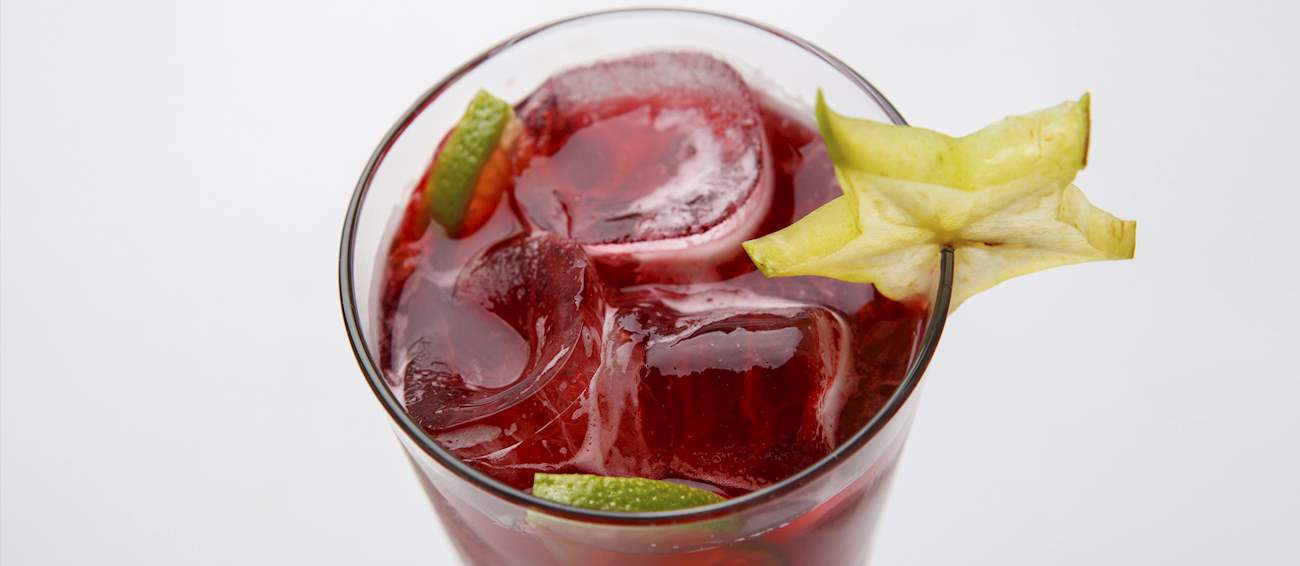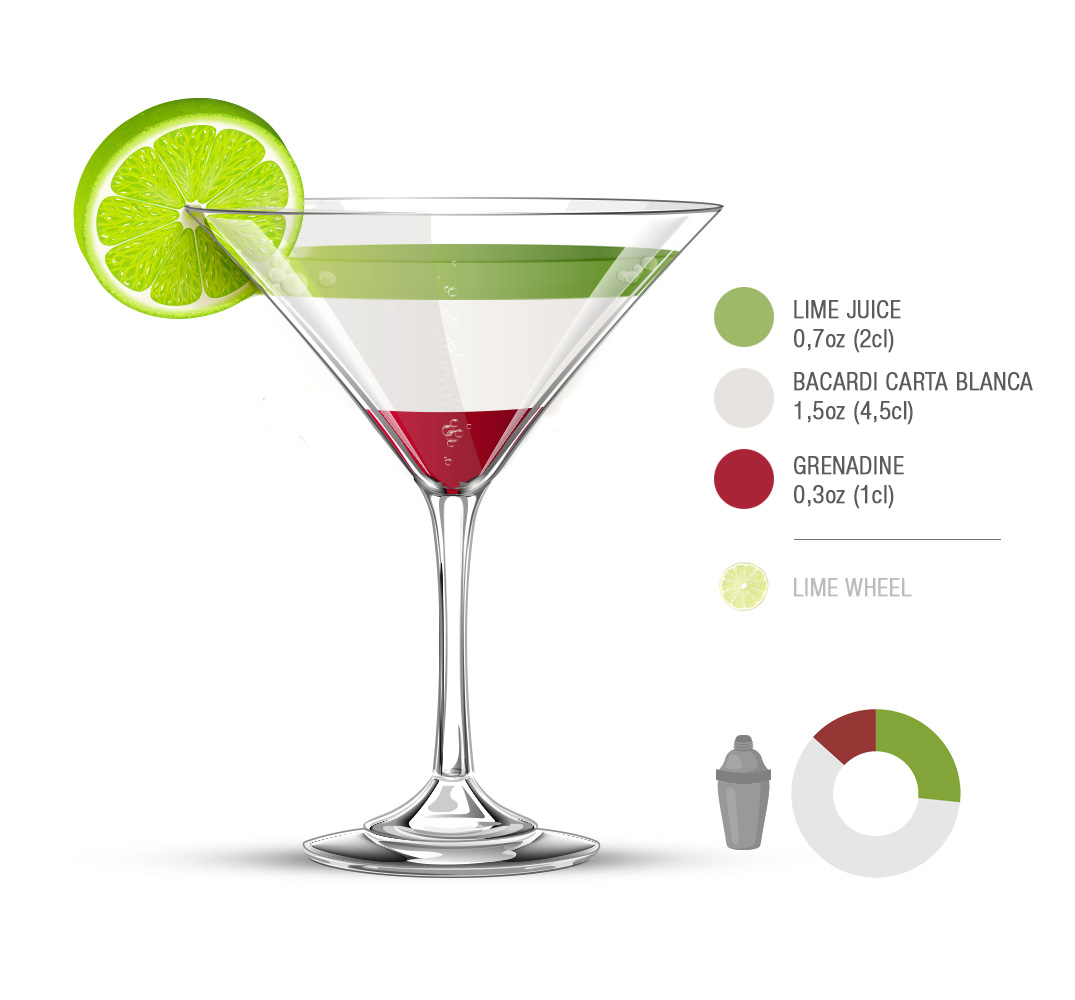MAIN INGREDIENTS
Bacardi is a classic cocktail that originated in Cuba at the beginning of the 20th century. It contains rum, freshly squeezed lime juice, rich sugar syrup, and grenadine syrup, which adds a perfect amount of sweetness to the cocktail. Prior to the addition of grenadine syrup in the combination (which is a modern version with American origins), the cocktail was considered to be a cousin of Daiquiri.
However, according to the New York Supreme Court ruling from 1936, the combination must contain Bacardi Superior Rum to be a true Bacardi cocktail. Typically, the cocktail has to be shaken and served straight up in a standard cocktail glass with a lime wheel garnish.
MAIN INGREDIENTS
Originating from Havana, Culto a la Vida is a classic Cuban cocktail consisting of dark rum, cranberry juice, lime juice, and sugar. It is important to use dark rum instead of dry white rum because it is aged for a longer period of time, which improves the cocktail's flavors.
Culto a la Vida (lit. Cult of Life) is typically made by blending and stirring the ingredients in a shaker before serving it on the rocks in a long drink glass with a lime wedge garnish.
MAIN INGREDIENTS
Cojito is essentially a Mojito with a twist. This cocktail consists of white rum, lime juice, sparkling soda water, and coconut-flavored rum, hence the capital C in the name. The coconut rum gives a unique tropical flavor to the mix, making Cojito a perfect summer drink.
Lime juice is first mashed with mint, followed by rum that is topped with crushed ice and sparkling water. Cojito is typically served in a highball glass, garnished with a mint sprig and a lime wheel. If desired, put some coconut on the rim of the glass, and if you don't have any coconut-flavored rum, feel free to use a combination of coconut milk and regular rum instead.
TasteAtlas food rankings are based on the ratings of the TasteAtlas audience, with a series of mechanisms that recognize real users and that ignore bot, nationalist or local patriotic ratings, and give additional value to the ratings of users that the system recognizes as knowledgeable. TasteAtlas Rankings should not be seen as the final global conclusion about food. Their purpose is to promote excellent local foods, instill pride in traditional dishes, and arouse curiosity about dishes you haven’t tried.









